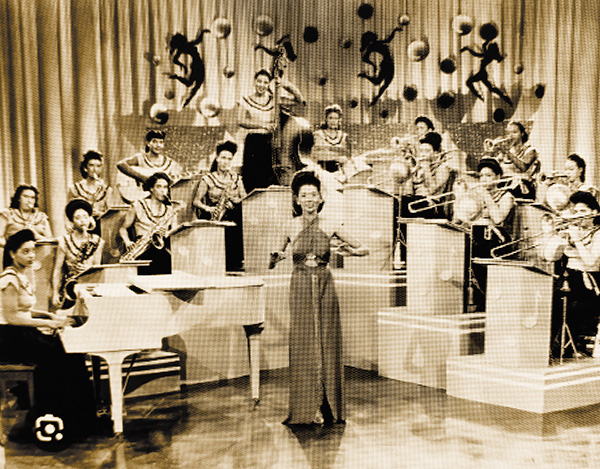Black Arts and Culture
Women’s History Month: All Female Jazz Band: International Sweethearts of Rhythm
“Discover the remarkable story of the International Sweethearts of Rhythm, an interracial, all-female jazz band that defied racial norms and captivated audiences during the Jim Crow era. Shedrick Byrd delves into their pioneering journey, showcasing the band’s talent, resilience, and lasting impact on jazz history. As we honor Women’s History Month, let’s celebrate the groundbreaking contributions of these extraordinary musicians.”
#WomensHistoryMonth, #InternationalSweetheartsOfRhythm, #JazzHistory, #FemaleMusicians, #Trailblazers

By Shedrick Byrd
The International Sweethearts of Rhythm (ISR) was an interracial, all-female jazz band that was active for 12 years, from 1937 to 1949. The band which began at the Piney Woods Country Life School was established in 1909 to train Black children in central Mississippi.
The original members of the Sweethearts were all African-American or mixed race students during the 1930s. They were taught by the school’s president, Lawrence Jones. The band began going out on concert tours to raise funds to support the school.
In 1943, two white women joined the ensemble, making it an interracial band performing in the deep South during the Jim Crow era. Their challenge of racial customs and laws was compounded by the fact that the mixed-race members of the band were light enough to “pass” for white. An interracial band violated both laws and customs in Mississippi and across the South.
As a result, the members of the band faced constant harassment.
The Sweethearts graced the stage as the first racially integrated all-female jazz band to tour nationally. Women had always been recognized as singers in the African-American culture, but rarely were they recognized as instrumentalists, much less as brass aficionados.
Operating from 1937 to 1949, their growth in popularity came during World War II, when many of the male jazz artists were serving as military draftees overseas, leaving an opportunity for women to shine, displaying their talents at home. The ISR were so popular they had audiences standing in line waiting to get a chance to see them. The ISR also performed for Black GIs overseas.
The ISR became a sixteen-piece all-women Swing orchestra. The word international denoted its diverse ethnic makeup, including African-American, Latin, Asian, Jewish, Hawaiian white and native American women. It was a formidable competitor to the all-male bands and the ISR was the most skilled of about 100 all-women orchestras of WWII.
As the orchestra matured and toured nationally the band attracted professionals. It had excellent improvising musicians executing evocative solos, precision section-work and lively arrangements. This was the band that forced skeptics to admit that women could play hard-swing jazz and hot music, just like the guys.
The success of the sweethearts refuted the idea that women couldn’t play music with the same skill and passion as men. In fact, they became one of the longest lasting all-women bands of the 1940s. By 1949 the swing era had come to an end and the sweethearts disbanded.
As a young boy I knew two of the band’s charter members. They were Ina Byrd, my mother’s youngest sister, and Helen Jones, the daughter of Laurence C. Jones, the founder and president of Piney Woods School. Helen Jones was the mother of Cathy Hughes, currently a radio and television personality and business executive. Hughes is also the founder and Chairperson of Urban One, Inc. which is the largest African-American-owned and operated broadcast company in the nation.
Much of the information in this article was taken from Blackpast, Wikipedia and Smithsonian Museum of Music.
Shedrick Byrd is the author of the Mississippi Byrd, from rural to urban to suburban.















